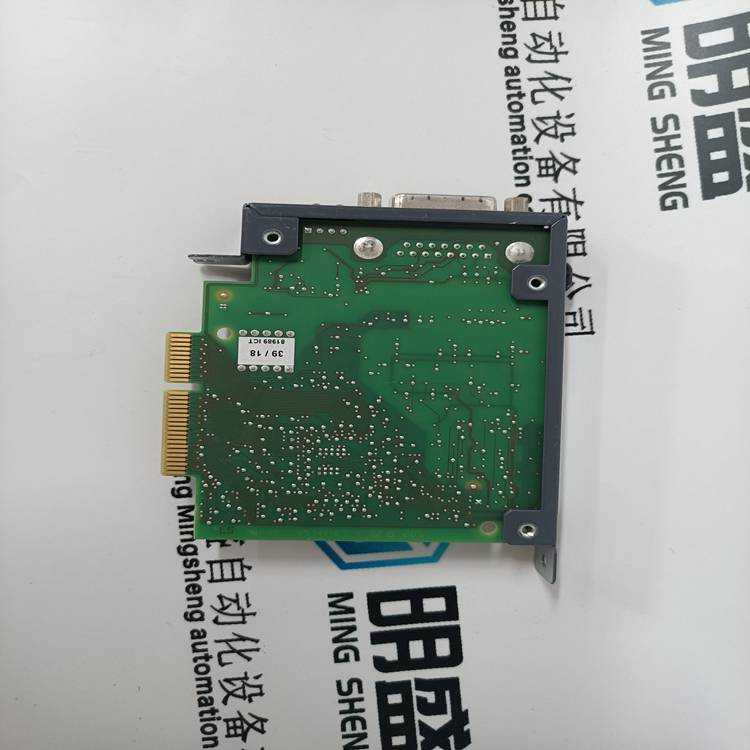 PCU-02 E-31785 PCU 02 控制器控制板单元 ABB
¥3137.00
PCU-02 E-31785 PCU 02 控制器控制板单元 ABB
¥3137.00
88VU01E GJR2326500R1000 88VU01B-E 控制主板 ABB
- ¥3278.00 1 - 9
- ¥3137.00 ≥10
- 工控产品产品特性
- 否是否进口
- 美国产地
 PCU-02 E-31785 PCU 02 控制器控制板单元 ABB
¥3137.00
PCU-02 E-31785 PCU 02 控制器控制板单元 ABB
¥3137.00
措施和措施类型的非规定性、说明性示例
b、 形式上,度量定义了集合或类的成员资格标准;e、 g.所有的集合
质量为2kg的物体。测量和测量类型之间的关系为
任何特定度量都是可以采取的所有可能集合的实例
对于测量类型。
c、 图20的下半部分描述了度量类型分类的上层,或者
分类方案。预计架构师将添加更详细的类型
(使分类更加专业化),根据需要,在其联邦成员内部。注意
服务级别具有多个继承,因为服务QoS或服务级别
协议(SLA)可解决用户需求、用户满意度、互操作性或
表演
d、 所有度量类型都有一条规则,规定如何完成度量;例如。,
单位、校准或程序。空间度量的规则包括坐标系
规则。例如,纬度和经度只能通过参考
地球周围的大地坐标系。
e、 作为一种度量类型,成本可以在体系结构中的不同级别进行捕获,基于
关于流程所有者的要求
f、 上图的上半部分描述了度量如何应用于架构
元素。注意,它们适用于对象之间的关系;e、 g.措施
适用于执行活动的执行者。该活动与:
度量值类型,说明哪些度量值类型适用于活动。这代表
通用联合任务列表(UJTL)任务及其适用的度量类型,包括
条件,即,条件由度量类型量化。(全部
条件的关系特征允许其为单数。)这是通过以下方式实现的:
条件的typeInstance关联,表示基本条件是成员
(实例)度量类型类。
核心流程中的使用
在六个核心过程中,测量数据的使用方式如下:
PPBE和JCIDS:
1.规划-充分性分析:从充分性的角度来看,以下措施
82
DM2-措施
http://cio-nii.defense.gov/sites/dodaf20/measures.html[2011年3月3日下午3:43:50]
与能力相关(包括能力增量,因为能力
全部或部分继承)。能力可以与相关的度量进行比较
与执行者一起查看执行者解决方案是否足够。一套
作为备选方案分析的一部分,还可以评估备选方案的执行者。
目标或预期效果可以与与执行者相关的措施进行比较。
2.编程-重叠分析:重叠分析的目的是确定
支出计划、投资组合中存在重叠或不希望的重复能力,
能力开发或采办计划。类似的功能通常只是
重叠或重复能力的指标。经常与类似的表演者
功能在不同的措施下运行,这些措施不重复或重叠
能力。例如,运行级态势感知系统可能不
在战术层面上快速或***,但他们可以处理更多的物体
在更大的区域上。
3.目标设定:措施通常是目标的一部分;e、 例如生产或效率目标。
4.需求:需求通常具有度量元素。
5.能力演进:度量是能力演进的一部分,显示增量
随着能力的发展,可测量的改进,并允许监控:
当能力预计将实现或已经实现时。
SE和DAS:
1.系统工程/设计:措施有时设定设计包络目标
称为性能特征或属性。它们还可以设置约束条件;
e、 例如成本约束。
2.性能-成本权衡:性能度量(如有效性)可以是
比较不同的成本,评估和决定备选方案
解决。
3.基准测试:可采用措施建立绩效基准,例如
关于人员技能或雷达跟踪精度测试。
4.组织和人员发展:组织和人员目标是
通常建立,然后使用措施进行监测。
5.能力规划:可采用措施规划所需的能力;e、 例如
网络、培训计划。
6.服务质量(QoS)描述:在SOA中,QoS通常表示为度量;
e、 例如比特丢失率或抖动。这些措施显示在服务描述中,包括:
作为服务发现的一部分,因此用户可以发现对满足其
质量要求。
7.项目约束:成本和风险等措施可能是项目的约束。
CPM:
1.投资组合平衡。可以使用措施来平衡投资组合,从而实现
目标和约束的正确组合。
Non-prescriptive, Illustrative Examples of Measures and Measure Types
b. Formally, a Measure defines membership criteria for a set or class; e.g., the set of all
things that has 2 kg mass. The relationship between Measure and Measure Type is
that any particular Measure is an instance of all the possible sets that could be taken
for a Measure Type.
c. The lower part of Figure 20 depicts the upper tiers of a Measure Type taxonomy or
classification scheme. It is expected that architects would add more detailed types
(make the taxonomy more specialized), as needed, within their federate. Note that
Service Level has multiple inheritances because a Service QoS or Service Level
Agreement (SLA) could address User Needs, User Satisfaction, Interoperability, or
Performance.
d. All Measure Types have a Rule that prescribes how the Measure is accomplished; e.g.,
units, calibration, or procedure. Spatial measures' Rules include coordinate system
rules. For example, latitude and longitude are understandable only by reference to a
Geodetic coordinate system around the Earth.
e. As a Measure Type, cost can be captured in the architecture at different levels, based
on the Process-owners requirements
f. The upper part of the figure above depicts how Measures apply to architecture
elements. Note that they apply to relationships between objects; e.g., the Measure
applies to a Performer performing an Activity. The Activity has a relationship to
Measure Type that says what Measure Types apply to an Activity. This represents
Universal Joint Task List (UJTL) tasks and their applicable Measure Types, including
Conditions, that is, Condition is quantified by a Measure Type. (The whole-part
relationship feature of Condition allows it to be singular.) This is accomplished by
Condition's typeInstance association, saying an elementary Condition is a member
(instance) of a Measure Type class.
Usage in Core Processes
Data for Measures are used in the six core processes in the following ways:
PPBE and JCIDS:
1. Planning – adequacy analysis: From an adequacy point of view, Measures that are
82
DM2 - Measures
http://cio-nii.defense.gov/sites/dodaf20/measures.html[3/3/2011 3:43:50 PM]
associated with a Capability (including Capability increment, since Capabilities have
whole-part inheritance). Capabilities can be compared with the Measures associated
with the Performers to see if the Performer solution(s) are adequate. A set of
alternative Performers as part of an Analysis of Alternatives could also be evaluated.
Goals or Desired Effects could compare with Measures associated with Performers.
2. Programming – overlap analysis: The purpose of an overlap analysis is to determine if
there are overlaps, or undesired duplicative capability, in the spending plan, portfolio,
capabilities development, or acquisition plan. Similar functionality is often only an
indicator of overlapping or duplicative capability. Often Performers with similar
functionality operate under different Measures which are not duplicative or overlapping
capability. For example, operational-level situation awareness systems may not be as
fast or precise as a tactical-level, but they may handle a larger number of objects
over a larger area.
3. Goal Setting: Measures are often part of Goals; e.g., production or efficiency Goals.
4. Requirements: Requirements often have Measure elements.
5. Capability Evolution: Measures are part of capability evolution, showing increments of
measurable improvement as the capability evolves and allowing monitoring about
when the capability is projected to be achieved or has already been achieved.
SE and DAS:
1. System Engineering/Design: Measures set the design envelope goals, sometimes
called performance characteristics or attributes. They can also set the constraints;
e.g., cost constraints.
2. Performance–Cost Tradeoffs: Measures of performance (e.g., effectiveness) can be
compared to different costs to evaluate and make decisions about alternative
solutions.
3. Benchmarking: Measures can be used to establish benchmarks of performance, such
as for a personnel skill or a radar tracking accuracy test.
4. Organizational and Personnel Development: Organizational and personnel goals are
often established and then monitored using Measures.
5. Capacity Planning: Measures can be used to plan for needed capacity; e.g., for
networks, training programs.
6. Quality of Service (QoS) Description: In SOA, QoS is often expressed as a Measure;
e.g., bit loss rate or jitter. These Measures show up in the service description and are
part of service discovery, so users can discover access to capabilities that meet their
quality requirements.
7. Project Constraints: Measures such as cost and risk can be constraints on Projects.
CPM:
1. Portfolio Balancing. Measures can be used to balance a portfolio so that it achieves the
right mix of goals and constraints.
 在线问
在线问
- 工控产品
- 否
- 美国
- 否
- ABB
- TP854 3BSE025349R1
- 220V
- 60KHZ
- PLC模块
- DCS模块
- PLC模块DCS模块



